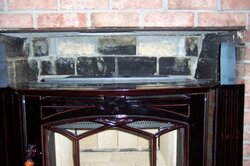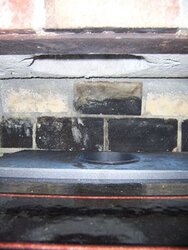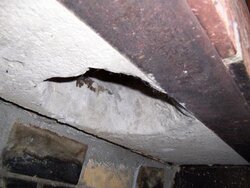Well, here are the pics, enjoy. It is late and I have to get to bed, but this has been quite an experience. I am not sure where to go from here, to be honest. The only place they have insulation right now is on the top piece of surround. I think what has happened here is that the people I am dealing with seem to be very knowledgable about chimneys, but not so about wood stoves and venting them. They have just gotten into the business of installing them, and got me a great deal on the stove itself, but I am afraid I have received some extra heartache for my bargain.
What happens if I get a pipe installed from the stove up into the flue (it is a corner chimney, so the flue makes a fairly immediate turn) and a block off plate? What are my issues then other than it maybe not drafting as well and not having the required area in front of the stove.
Again, thanks for any and all opinions.
p.s. It is 9" from the stove to the flue opening
What happens if I get a pipe installed from the stove up into the flue (it is a corner chimney, so the flue makes a fairly immediate turn) and a block off plate? What are my issues then other than it maybe not drafting as well and not having the required area in front of the stove.
Again, thanks for any and all opinions.
p.s. It is 9" from the stove to the flue opening





